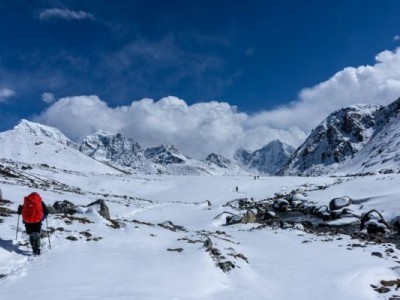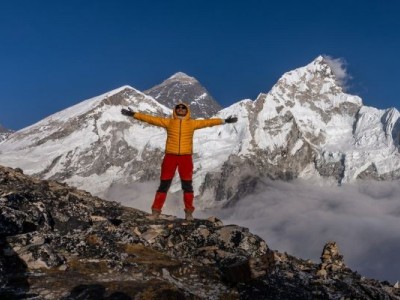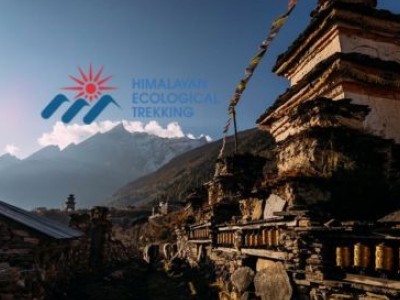The 10 best places to visit in the Kathmandu Valley provide an amazing mix of ancient culture, spirituality, and stunning natural beauty. The Kathmandu Valley is a magical place that serves as both a true museum of evidence from several centuries ago, interaction with modern life. If you are after either cultural experiences, spirituality, or simply want to enjoy nature, the best places to visit in the Kathmandu Valley allow for all types of travelers. Spanning UNESCO World Heritage Sites to stunning mountain views in the distance, the Kathmandu Valley tourist attractions provide a rich representation of Nepalese culture and history.
Table of Contents
Why Visit Kathmandu Valley?
The Kathmandu Valley is Nepal's cultural and historical heart, with seven UNESCO World Heritage Sites spanning over 2,000 years of architecture and art. This amazing location invites visitors on an unparalleled experience to travel back through time, with ancient temples, royal palaces, and traditional communities all providing perspectives on dynasties, devotion, and art.
The valley's unique geography provides a protected enclave that allows the majestic Himalayas to stand sentinel over urban centres and rural villages. Cultural attractions in Kathmandu Valley range from sacred Buddhist stupas to unique Hindu temples, all representative of the spiritual strata that make up Nepal. Scenery ranges from terraced hillsides and ancient forests, with lively markets, and tranquil monasteries.
What makes Kathmandu Valley so special is its living heritage - these are not just relics of the past to look at, but rather vibrant hubs of worship, trade and social interaction where traditions exist in their in-situ form.
Kathmandu Durbar Square -The Royal Courtyard
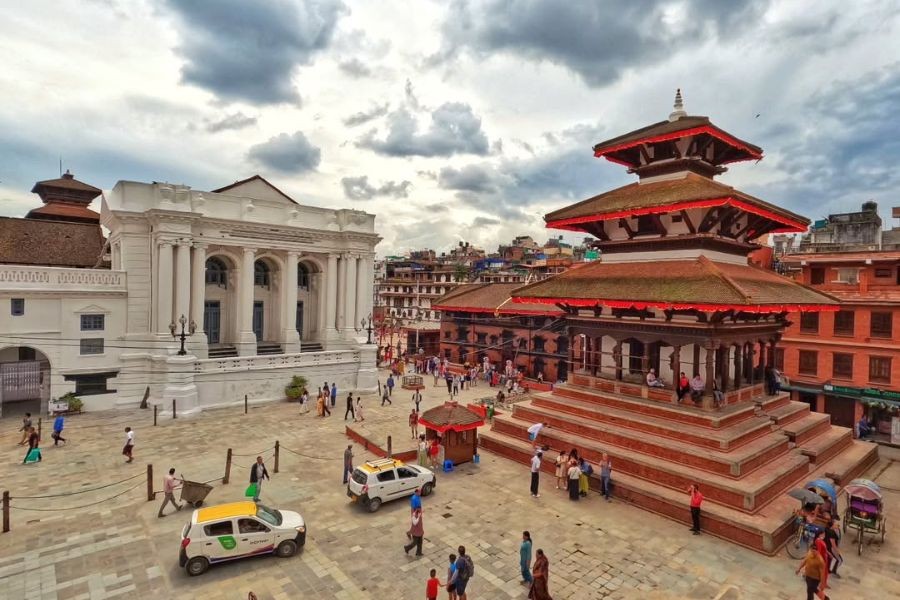
Kathmandu Durbar Square is regarded as the most significant historical site in the Kathmandu Valley, having served as the former royal palace complex of the Malla and Shah kings. As an example of Newar architecture and woodcraft, the square illustrates the high point of artistic creativity with its wood carvings, stone sculptures, and temples with multiple tiers.
The Hanuman Dhoka Palace in Kathmandu Durbar Square is named after Hanuman, the monkey god, and features a carved statue at the door. The palace had several museums that exhibited royal objects, weapons, and ceremonial devices narrating the history of the monarchy in Nepal. Also within the palace complex is the Kumari House, home to the living goddess, Kumari, which is said to attract a dedicated following of devotees and curious wanderers to catch a glimpse of the living goddess she had lost as a child.
Other highlights in the square includes the tall Taleju Temple, which is very impressive, and Jagannath Temple, which is quite ornate and features famous erotic carvings. The Shiva-Parvati Temple offers an excellent view of the bustling square below. Some of the temples and structures in Durbar Square were damaged in the Nepal earthquake in 2015, and restoration or rebuilding is still going on to maintain the character of the area's UNESCO World Heritage designation.
The square comes alive during festivals such as Indra Jatra and Dashain, when traditional dances, cultural performances, and rituals launch separate celebrations and animate the ancient courtyard for the Nepalese population's heritage.
Patan Durbar Square -The Living Museum of Art
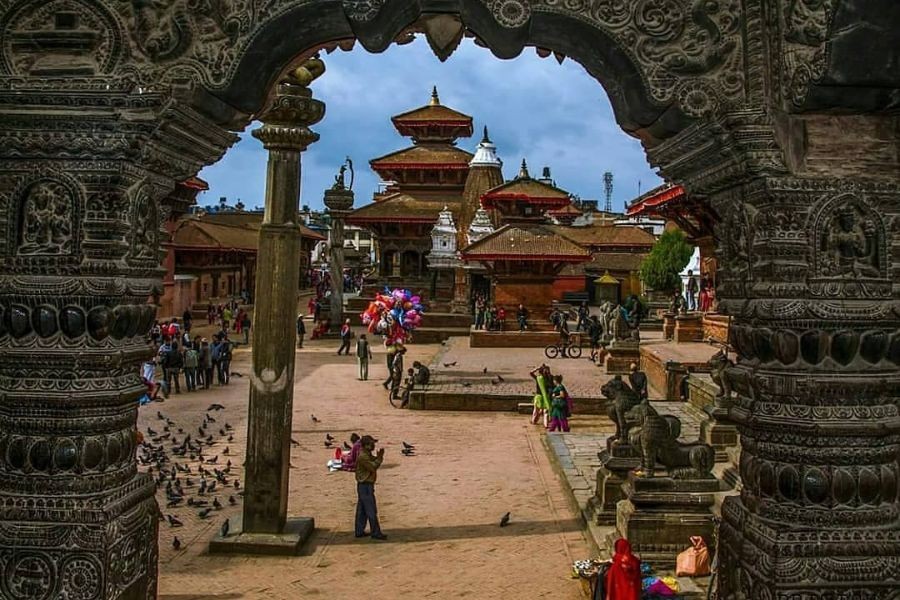
Patan Durbar Square, in Lalitpur, is the best representation of Newar architecture and certainly one of the most artistic places in Kathmandu Valley. It is a UNESCO World Heritage Site, containing an astonishing number of temples, palaces, and courtyards displaying the craftsmanship of Nepal in the medieval period.
The Patan Museum, housed in the former royal palace complex, is one of Asia's best collections of Buddhist and Hindu art. The museum contains collections of ancient manuscripts, religious sculptures, and ceremonial artefacts that offer considerable insight into the valley's spiritual and cultural development.
The square is also lined with many temples including the Krishna Mandir, which is unique as a stone temple dedicated to Lord Krishna, while most temples are pagoda style. The nearby Hiranya Varna Mahavihar (Golden Temple) features stunning metalwork and is a functioning Buddhist monastery.
Patan's living heritage is not just the heritage sites; the neighbouring areas of Patan are also alive with craft traditions that have been passed down through generations. Visitors can find metalworkers shaping religious statues, thangka painters painting sacred art, and woodworkers constructing elaborate architectural features using methods that have not changed from previous generations.
The square hosts various cultural events throughout the year, including the Rato Machindranath Jatra, one of Nepal's longest-running festivals, which demonstrates the area's continued religious and cultural significance.
Bhaktapur Durbar Square - The City of Devotees
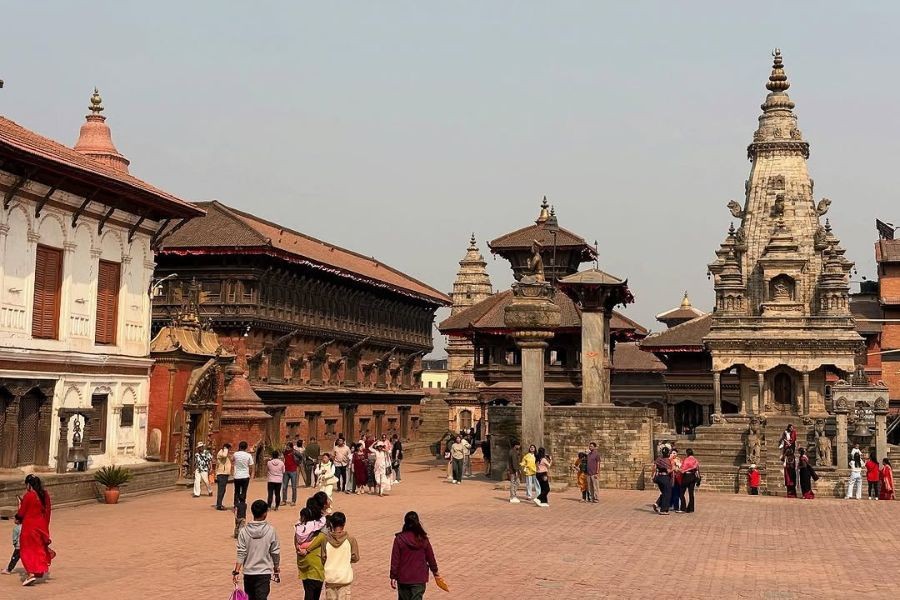
Bhaktapur Durbar Square provides the valley's most genuine medieval experience, which is reputed to present a completely authentic example of traditional Nepalese urban design, achieved through a combination of historical legislation, a committed local populace, and sometimes, the preservation of families living a traditional historic lifestyle.
The Square is a hub of vigour and the centre piece of the town is the 55 - Window Palace, renowned for its wood carving and integrated design aesthetic. The balcony of the palace, complete with carved detailing and traditional proportions is one of the finest examples of decorative architecture from the Malla period. To either side is the Vatsala Temple (rather famous for its bronze bell, that is noted for its elegant proportions).
Next in line is the Nyatapola Temple, Bhaktapur's tallest building and Nepal's tallest pagoda temple; the Nyatapola Temple dominates the skyline with its 5-stories, where guardian statues depict the successive Strength levels required to protect the temple. Each pair of guardians reflects the traditional cosmic order, including the legendary wrestlers, elephants, lions, griffins, and goddesses which accompany each pair.
Ultimately, the historical monuments and buildings of Bhaktapur may contribute to the appeal of the valley, but the existence of its culture living on, is equally captivating. The narrow alleys of Bhaktapur littered with pottery square families reveal how families have lived with and cultivated their practice together over generations. Visitors are able to witness the process of pot-making directly, starting with the clay meticulous preparation, followed by the shaping finishes, glazing (if required), and finally, firing in their traditional kilns.
The city's commitment to preserving traditional lifestyle makes it feel like stepping back in time. Local festivals, daily rituals, and community gatherings continue much as they have for centuries, offering visitors authentic cultural experiences rarely found elsewhere.
Swayambhunath Stupa (Monkey Temple) - Spiritual Heights
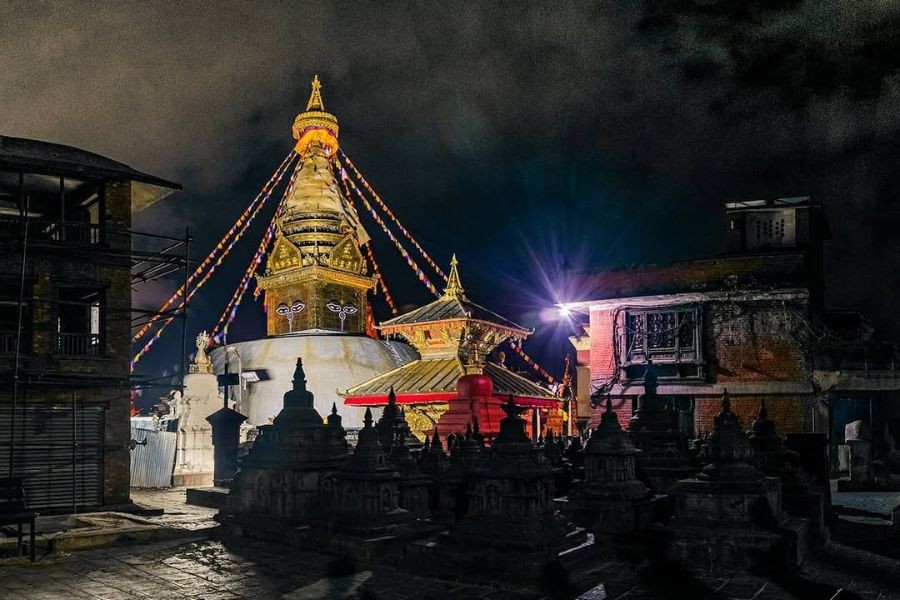
Located on a hilltop west of Kathmandu, Swayambhunath Stupa is one of the most sacred opportunities in the Kathmandu Valley for Buddhist pilgrims and spiritual seekers from all over the world. The stupa has been around for 2,500 years and is called the Monkey Temple due to its monkeys (Macaques) that inhabit the site. Although it serves as an important spiritual activity and sacred site, it is also offers amazing panoramic views of the entire Kathmandu Valley.
The white dome with a golden spire and painted Buddha Eyes facing all four directions forms an iconic backdrop against Kathmandu's skyline and the valley beyond. The eyes of Buddha are known as "Wisdom Eyes" because they represent the omniscient nature of Buddha's consciousness. The question mark-like symbol in between symbolizes the idea of all things being one.
Reaching the Swayambhunath complex requires climbing 365 stone steps, representing a slow journey towards spiritual enlightenment. As pilgrims ascend the steps, they are greeted by prayer wheels all the way up the steep stairway. Pilgrims spin the prayer wheels as they ascend to accumulate spiritual merits. The Swayambhunath Hilltop is home to many shrines, temples, and meditation spots to both Tibetan Buddhist and local Newar Buddhist and communities.
The spiritual vibe at the site becomes more palpable at dawn and dusk as the monks practice their daily rituals and pilgrims circumambulate the stupa while offering prayer chants. The view from the hill reveals the entire Kathmandu Valley and if it's a clear day, we can observe the Himalaya peaks. The ability to gaze over such a spectacular landscape allows the mind to be perfectly still for meditation and contemplation.
The monkeys at Swayambhunath contribute to its charm, however visitors must be aware of their surroundings with food, and belongings. The monkeys are considered sacred, and representation of divine beings that were said to have protected the stupa in Buddhist myths.
Boudhanath Stupa - The Heart of Tibetan Buddhism
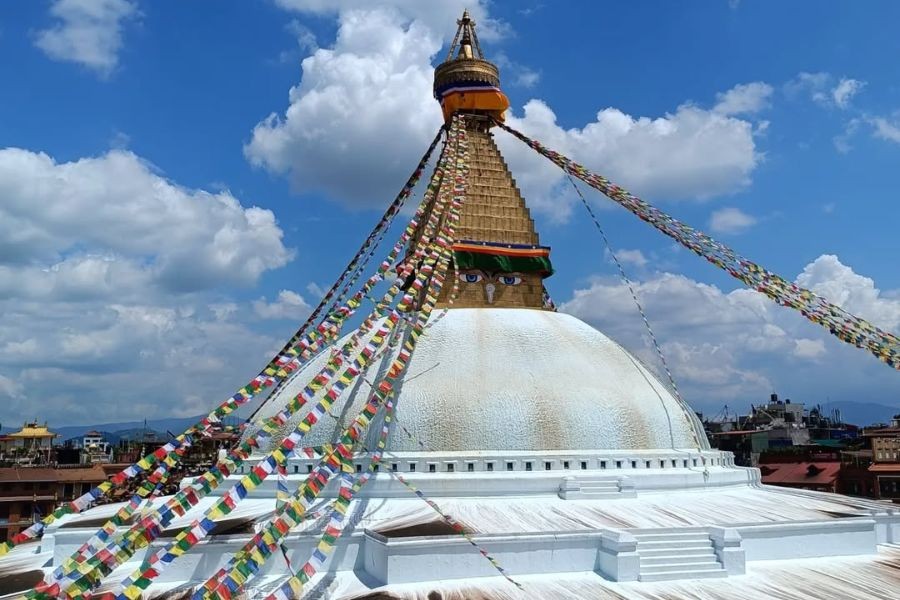
Boudhanath Stupa is one of the largest spherical stupas in Nepal, and the clear spiritual heart of Tibetan Buddhism in the Kathmandu Valley. As a UNESCO world heritage site, it draws thousands of pilgrims and visitors who come to be part of its sacred nurturing environment, and to participate in its vibrant community of Tibetan refugees.
The massive white dome, 36 meters high, signifies the earth element of Buddhist cosmology and the golden spire signifies the path to enlightenment. The eyes of the Buddha are painted on two sides of the harmika (square structure) above the dome and are said to watch over all beings with compassion. Mantras and prayers are spread throughout the valley by prayer flags that flutter in the wind.
In the surrounding area are Tibetan themed restaurants, Tibetan monasteries, handicraft shops, and meditation centers form an impressive slice of authentic Tibetan culture. Monks in maroon robes can be observed performing daily rituals at the stupa, spinning prayer wheels or engaging in philosophical debates in monastery courtyards.
The stupa really comes alive during Tibetan festivities like Losar (Tibetan New Year) and the Buddha Jayanti celebrations where thousands of pilgrims come to perform koras (circumambulations) about the stupa. It sends a continuous flow of devotees that can last all day and into the night.
Boudhanath contains versatile cafes and rooftop restaurants that have ample and superb views, perfect for
Observing the many pilgrims who visit the stupa and the changing moods of the stupa throughout the day. The sunrise and sunset are particularly magical times of day when the warm golden light touches the white dome and the light casts long shadows across the buildings.
Pashupatinath Temple - Sacred Hindu Pilgrimage Site
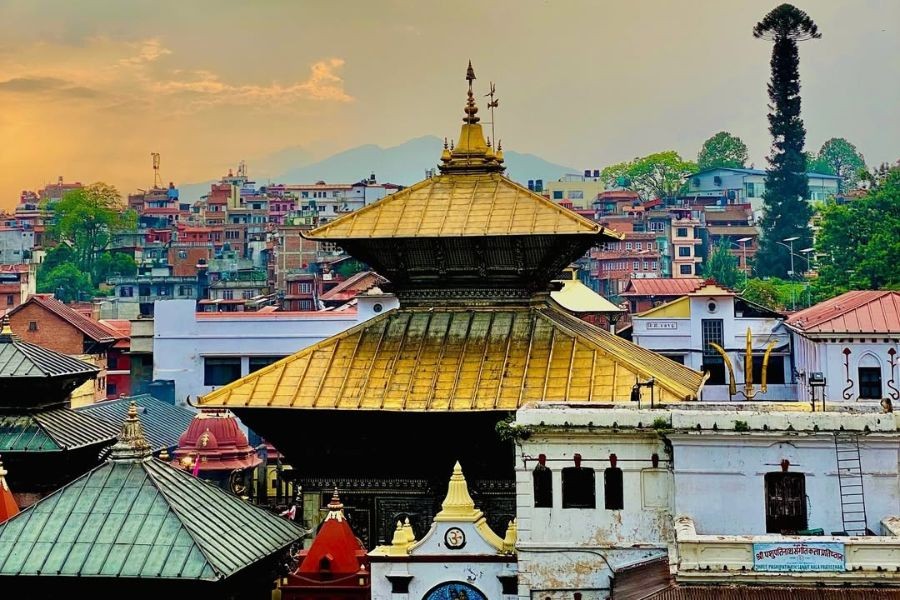
Pashupatinath Temple is Nepal's most sacred Hindu site and one of Kathmandu's most important spiritual sites to visit. The complex is dedicated to Lord Shiva in the form of Pashupati (Lord of Animals) and sits on the banks of the scared Bagmati River, one of the major pilgrimage destinations in South Asia for Hindus.
The main temple has a distinctive pagoda style with a gold roof and contains a sacred lingam, which brings thousands of worshippers daily. Non-Hindus can't get into the main temple, but there are still many locations within the grounds from which to observe the religious observances and views of the architecture.
What is most unique about the temple is the fact that, along the banks of the Bagmati river, you will find cremation ghats where Hindu funeral rites are observed according to ancient tradition. Although this may not be something you want to dwell on, is represents the Hindu acceptance of the natural cycle of life and provides a fascinating look into one's spiritual beliefs surrounding death and rebirth.
Throughout the temple complex are also many smaller temples, ashrams, and meditation caves where sadhus (holy men) observe their spiritual disciplines. These holy men wear unimaginable amounts of colorful clothing, most of them have painted faces and unusual hair (top knots or sometimes no hair) and they represent a variety of Hindu Festivals. Many of them welcome you to interact with them respectfully, if you show interest.
During important festivals such as Maha Shivaratri, Pashupatinath becomes an extraordinary event with hundreds of thousands of pilgrims gathering to pay tribute to Lord Shiva. The festival creates a wonderful ambience of devotion, song and culture that generates memorable cultural experiences.
The location of the temple along the Bagmati River adds natural beauty to its spiritual significance. The river, which Hindus believe is sacred, flows through the valley to connect with the Ganges downstream, making Pashupatinath part of the larger Hindu sacred geography.
The Changu Narayan Temple - Nepal's oldest temple complex
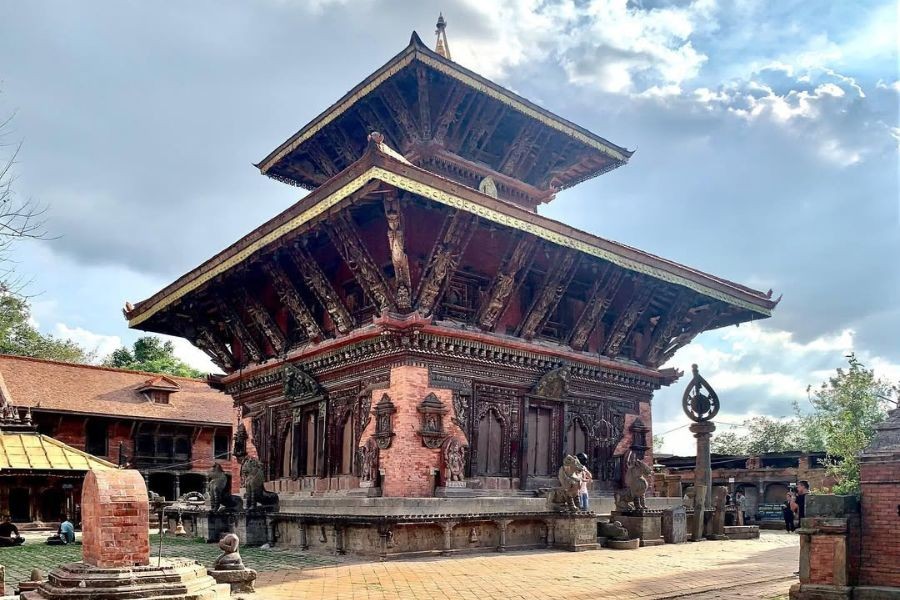
Changu Narayan Temple is the oldest temple in Nepal. In fact, it demonstrates the supreme example of ancient Nepalese temple architecture and stone carving. Perched on the hilltop in Bhaktapur district, Changu Narayan Temple is a UNESCO World Heritage Site that demonstrates stylistic achievements in art, architecture, and culture for more than a 1500 year continuum.
It is dedicated to Lord Vishnu and contains some of the finest stone and metal sculptures in Nepal (4th - 9th centuries), front the famous Garuda statue, Vishnu Vikranta sculpture, and several incarnations of Vishnu, all of which highlight the elaborate artistic traditions that existed in ancient Nepal.
In addition, the temple also has several stone inscriptions which represent some of the most important historical records about society, politics, and religion in ancient Nepal. Of note, the earliest inscription (464 CE) is detailed information about the Licchavi and represents some of the first written records in the history of Nepal.
The surrounding village maintains traditional Newar architecture and lifestyle, offering visitors authentic cultural experiences away from the more touristy areas of the valley. Local artisans continue traditional crafts, and the community preserves ancient festivals and rituals associated with the temple.
The temple's hilltop location provides beautiful views across the valley and surrounding countryside. The peaceful atmosphere, combined with the artistic treasures and historical significance, makes Changu Narayan an essential destination for understanding Nepal's ancient heritage.
Recent conservation efforts have focused on preserving the temple's ancient artworks and maintaining its structural integrity while respecting its continued religious use by the local community.
Chandragiri Hills - Cable Car Views and Nature Escape
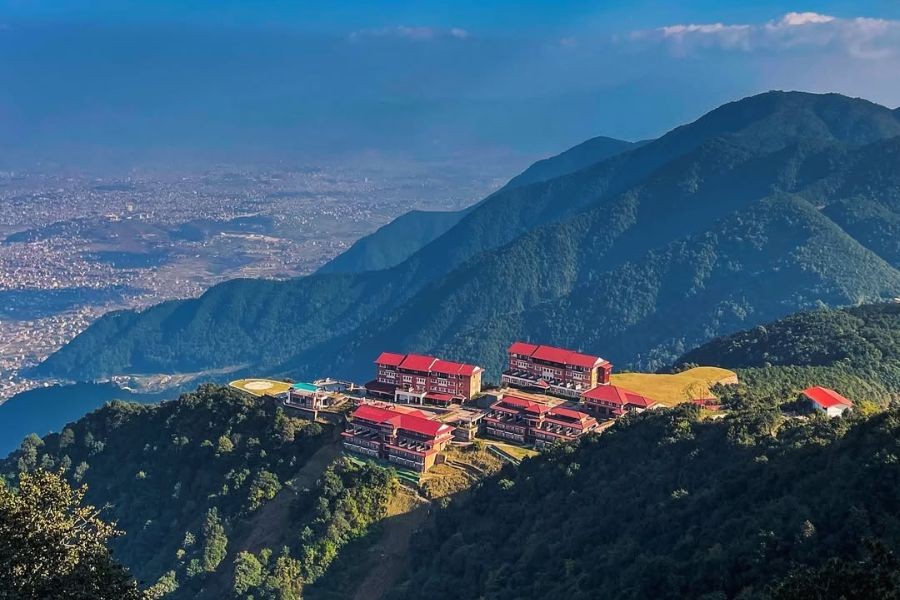
Chandragiri Hills is one of the most exciting things to do in Kathmandu Valley for travelers looking for mountain views and outdoor activities. The cable car system built in 2016 is a modern space, but after going on the 20 minute ride from Thankot to the top of the hill at an elevation of 2,551 meters, the scenery suddenly feels somewhat historical.. The ride in the cable car comes at no small cost also, so don't be surprised that civilization pops away as the cable car ascends above the Kathmandu Valley and village settlements.
The views of the valley, terraced hillsides and even quaint village buildings unfold before your eyes during the ride. On route to the top, passengers notice when gaining elevation, one can quickly go from the congested valley floor to a profound spiritual space in the presence of mountains.
The main hilltop destination is the rebuilt Bhaleshwor Mahadev Temple for Lord Shiva, which serves as both a sacred site and a scenic viewpoint. The Temple grounds are ideal for the full panoramic views of the Kathmandu Valley and with clearer skies, incredible mountain views of the Himalayan range include Langtang, Ganesh Himal, and even Mount Everest is visible in far distance.
The hilltop destination also featured various restaurants, cafes and picnic areas providing an excellent family space. This is also an adventure play-ground for the more adventurous with zip-lining, viewing tower, and hiking trails to local picnic areas, gardens and meditation spots for a quieter experience.
Chandragiri's location is ideal for viewing sunrises and sunsets. You can create dramatic changes in light throughout the valley and our range of mountains, which can be perfect for photographs and romantic settings.
The site is also historic as it was the site where Prithvi Narayan Shah, founder of modern Nepal, first saw the Kathmandu Valley, before he started his conquest to unify what is now the country of Nepal.
Nagarkot - Sunrise, Mountains, and Fresh Air
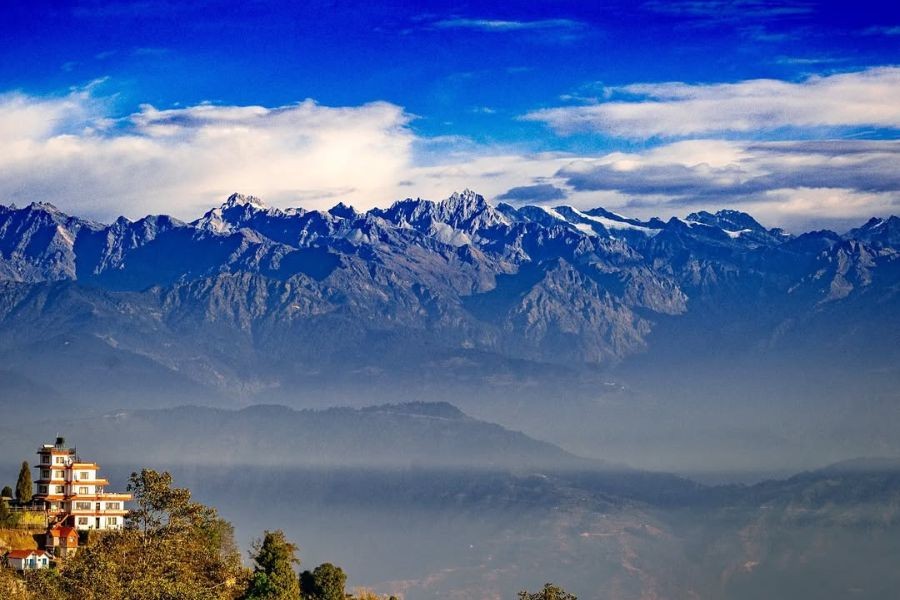
Nagarkot is the best hill station in the list of places to visit from Kathmandu Valley due to its tremendous Himalayan sunrises and cooler and fresher mountain air. Nagarkot is located 32 kilometers east of Kathmandu at an elevation of 2,175 meters, providing a welcome respite from the Kathmandu Valley's heat and pollution.
The main attraction in Nagarkot is the sunrise view of the Himalayan range which on clear days has peaks stretching from Dhaulagiri in the west to Kanchenjunga in the east. The all-embracing view allows you to see eight of the thirteen tallest mountains in the world, one of the widest mountain views from the Kathmandu Valley.
Nagarkot is outstanding for more than just its mountain views. It also offers cool temperature, fresh air, and a peaceful place to relax. In the vicinity of Nagarkot, you will find a variety of scenic hiking trails through terraced, farmland, traditional villages, and dense forests that showcase rural Nepalese life and natural ecosystems.
Accommodation in Nagarkot ranges from budget guest houses to luxury resorts, all oriented to take advantage of the mountain views. Many hotels include sunrise viewing decks(and places to drink tea or coffee) to watch peaks emerge from the darkness into the magical golden light of sunrise.
The natural beauty of landscaped area varies greatly with the seasons (spring brings rhododendron flowers; summer creates lush green landscapes; autumn gives breathtaking views of the mountain ranges; and winter brings snow that can blanket the whole area into a winter wonderland).
Popular activities include photography, hiking, mountain biking, and just relaxing in the peace and quiet of the mountains. The Nagarkot View Tower also provides the best view of the area for those looking for the ultimate getaway.
Thamel - The Heartbeat of Tourist Life in Kathmandu

Thamel is the bustling commercial and social hub for international tourists and one of the more exciting tourist sites in the Kathmandu Valley. This lively strip merges traditional Nepalese culture with global experiences in a way that appeals to travelers from all corners of the earth.
The streets in Thamel are narrow and bustling with shops selling Nepalese handicrafts to trekking gear and clothing to souvenirs, etc. Local artists display their arts along with international brands, creating a shopping experience that covers everything from authentic to practical.
The food scene in Thamel is reflective of its international personality. In addition to Nepalese food such as dal bhat and momos, you can find international options such as Italian pasta, curry from India, or continental breakfast food. There are many rooftop restaurant options available in Thamel, giving you a chance to dine and gaze, while some local eateries have an array of authentic flavours at a reasonable price.
The nightlife scene inclusive of bars serving drinks, live music venues and cultural shows with traditional Nepalese dances and music, makes for an opportunity to take in the local culture while meeting fellow travelers from all over the world.
Furthermore, Thamel is the core base for planning trekking trips, mountain flights, adventure activities of all kinds throughout Nepal. There are many agencies operating out of Thamel that offer options from a day trip around the valley to multi-week expeditions in the Himalayas.
Thamel is touristy, but there are still parts of authentic Nepal in Thamel. With temples, typical Nepalese architecture and local activities, you will get glimpses into life in Kathmandu beyond the commercial establishments.
Things to Do in Kathmandu Valley: Culture, Cuisine & Adventure
Adventure awaits in Kathmandu Valley for all travelers, whether they are interested in culture, spirituality, adventure-seeking, or food. All options allow for a customized experience depending on interests and the type of traveler a visitor is.
Cultural Experiences consist of, attending local festivals, visiting artists and craftspeople, participating in meditation at Buddhist monasteries, and guided heritage walking tours in ancient neighborhoods, to cultural immersion experiences, staying with local families learning local crafts, or attending religious rituals every day.
Culinary Options are plenty, from street food walks sampling momos, sel roti, or chatamari to cooking classes learning to make traditional dal bhat and Newari specialties! The rich diverse population affords opportunities for authentic Tibetan, Sherpa, and ethnic cuisine along with traditional Nepalese food!
Adventure for travelers includes mountain biking around rural villages, rock climbing natural rock formations on the valley cliffs, paragliding over amazing scenic views, and whitewater rafting on Nepal's rivers! All the day hikes connect with dozens of cultural sites as well as provide good exercise and natural beauty.
Activities relating to the pursuit of Spiritual activities are meditation retreats, Yoga classes, pilgrimages to holy sites, or discussions with religious scholars regarding Buddhist and Hindu philosophies. Many temples and monasteries will allow visitors to come and experience their spiritual practices.
Activities that relate to Shopping and Crafts are visiting traditional markets, making pottery or metalwork, commissioning original works of art, and purchasing locally made handcrafted gifts and goods directly from the artisans. The craft traditions in the valley are woodcarving, hand painted thangka, jewellery, and woven textiles.
Frequently Asked Questions
When is the best time to visit places in Kathmandu Valley?
The best time to visit Kathmandu Valley is during autumn (October-November) and spring (March-May) when the weather is clear, temperatures are comfortable, and mountain views are optimal. Winter offers good visibility but can be cold, while monsoon season (June-September) brings rain but fewer crowds.
How many days are required to visit the best places in Kathmandu Valley?
A minimum of 5-7 days allows you to visit the major cultural attractions in Kathmandu Valley, including the three Durbar Squares, main temples, and hilltop viewpoints. However, 10-14 days provides time for deeper cultural immersion and day trips to surrounding areas.
Are Kathmandu Valley's historical sites suitable for all ages?
Most sites are accessible to visitors of all ages, though some locations like Swayambhunath require climbing stairs. Many sites offer alternative access routes, and the flat areas of Durbar Squares are easily navigable for elderly visitors and families with children.
What should I wear when visiting religious sites in the valley?
Dress modestly with covered shoulders and legs when visiting temples and religious sites. Remove your shoes before entering temples and show respect for ongoing religious ceremonies. Certain sites may require head coverings.
How can I get around to visit different places in Kathmandu Valley?
Local buses, taxis, and hired cars provide transportation between locations. Many attractions are within walking distance of each other in the main cities. For hilltop destinations like Nagarkot and Chandragiri, organized tours or private vehicles are recommended.
Conclusion
The 10 places to visit in Kathmandu Valley offer an extraordinary journey through Nepal's rich cultural heritage, spiritual traditions, and natural beauty. From the architectural marvels of the Durbar Squares to the spiritual heights of ancient stupas, each destination provides unique insights into the valley's multifaceted character.
These cultural attractions in Kathmandu Valley reward every type of traveler with transformative experiences that connect visitors with centuries of human achievement and artistic excellence. Planning your visit to include these diverse Kathmandu Valley tourist attractions creates an itinerary that balances cultural education, spiritual reflection, and personal adventure.
Ready to explore these incredible destinations?
Let us help you plan your perfect Kathmandu Valley adventure!
➤ Request a Custom Quote: Get personalized itineraries tailored to your interests and budget.
➤ Inquire Now: Email [email protected] for detailed itineraries, pricing, and answers to all of your questions.
➤ Chat Instantly: Contact Bikesh directly via WhatsApp at +977 9851006023 for a personalized online briefing or quick chat about your travel plans.
Don't just read about these amazing places to visit in Kathmandu Valley – experience them firsthand with expert local guidance!
